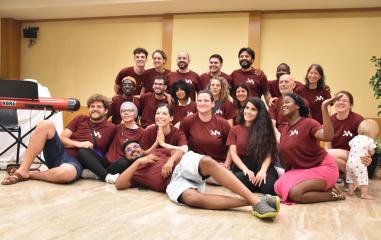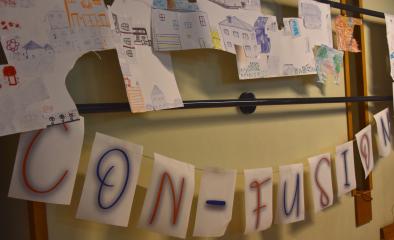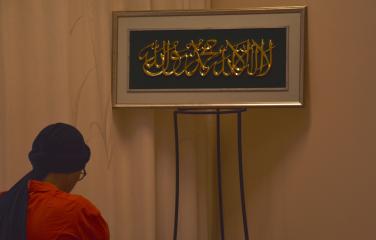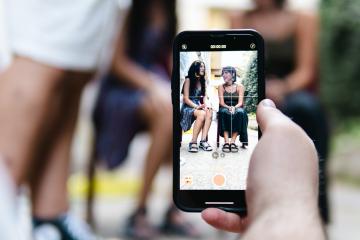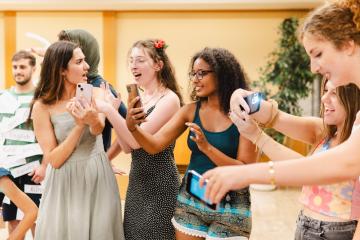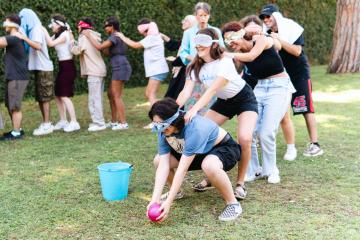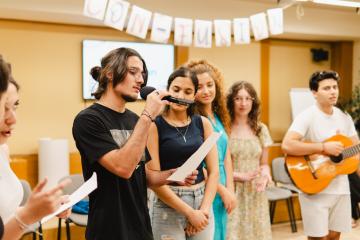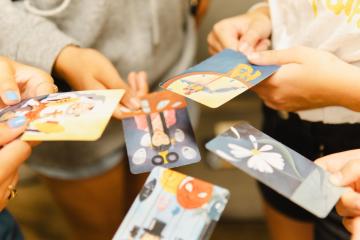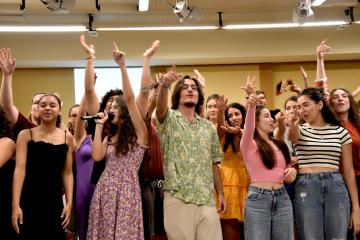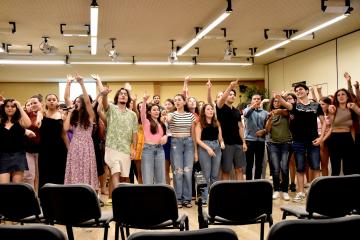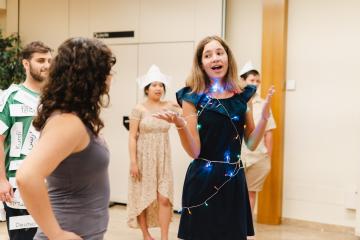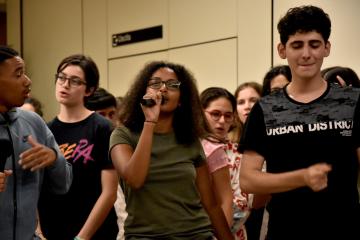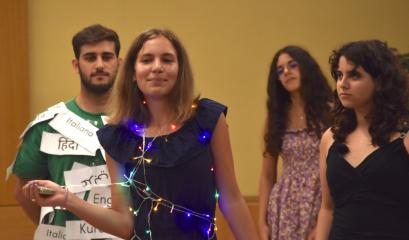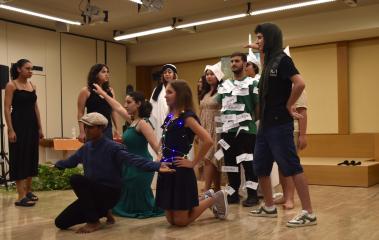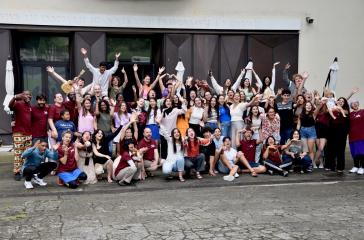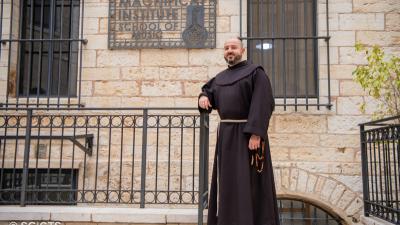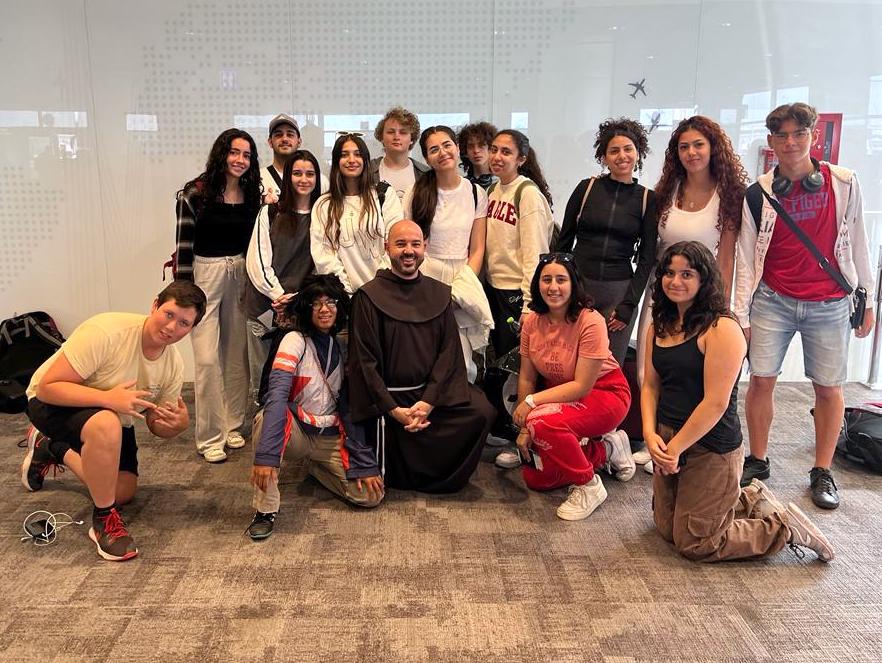
From the confusion of the Tower of Babel to the fusion of stories, cultures and languages. This was the experience of 55 youngsters aged between 13 and 22, who took part in the third “Knüpfwerk” from 27 July to 5 August. It is an interreligious and musical summer camp promoted by the Magnificat Institute of Jerusalem, the music school of the Custody of the Holy Land, the “Upper Room” association of the diocese of Vienna and the German organization “Faiths in tune” of Berlin. After Austria and Germany, this year’s camp was held in Italy. The youngsters, together with about twenty activity leaders, stayed at the Mariapoli Centre in Castelgandolfo. The Centre is in a part of the gardens of the Apostolic Palace (until a few years ago the summer residence of the Pope) and is run by the Focolari Movement.
Entwining
The word “Knüpfwerk” means entwining or embroidery. It refers to what is woven with different coloured threads, in this case the symbol of different cultures and identities. Young people of different cultural and religious backgrounds from Austria, Germany, Italy and Jerusalem came together for an all-round educational experience. They also included some students from the Magnificat Institute of Jerusalem. A total of 14 youngsters – Christians, Jews and Muslims – were accompanied by the director of the Institute, fr. Alberto J. Pari, and Angelie Villaluz, who after her experience as a student is today one of the activity leaders of the camp. In Rome, they were joined by Giuliana Mettini, deputy head of the Magnificat, and Alessandro Caspoli, a member of the Board. Through music, art and creativity, but also co-existence, in ten days the youngsters went from an initial confusion to an entwining of experiences and languages, in a context of dialogue, inclusion and peaceful coexistence.
Beyond confusion
“Con-fusion, the reel tower of Babel” was the topic of this year’s camp. The story of the Tower of Babel is present in different religious traditions and the youngsters were familiar with it in some way. Through activities, workshops, games and periods of meditation and discussion, the youngers reflected on the topic of confusion and diversity, and on building up a peaceful, inclusive and harmonious coexistence. There was also time for moments of prayer for each religion, in which the youngsters could take part freely. One day was dedicated to a visit of Rome, and there was also time for a dip in Lake Castelgandolfo. “We mixed them together as much as possible,” says Fr. Alberto, “both in the rooms and in the work groups. This was so that they could really get to know new people, speak languages that are usually not spoken and have to move out of their comfort zone. It’s true that it is a little hard, because everybody, at least at the beginning, tried to stay with their friends, but… the magic of the encounter blossomed.” The different languages echoed in the corridors of the Centre, no longer as borders between the different groups but as new possibilities for each person to get to know someone different from themselves. Like a body, the parts of which, although different from one another, contribute to forming a harmonious unit.
The reel
It was starting precisely from the body and the different functions of the various parts – feet, knees, abdomen, chest, mouth, eyes - that the youngsters “built” their Towers of Babel, in particular making use of the new technologies. Divided into five groups, they made reels – short videos in a vertical format, created through several images or video clips - in which they told the story of their own Tower of Babel, starting from the feet and the ground and arriving at the head and the sky. All the work converged into a final show: not just a juxtaposition of pieces, but a harmonious product built up with the collaboration of each and every one of them. “When men tried to build the huge tower, God confused their languages,” said Fr. Alberto. “As our youngsters were from many different countries, languages and cultures, we wanted to reach fusion from confusion: from con-fusion to co-fusion”. The experiment was successful.
Marinella Bandini


